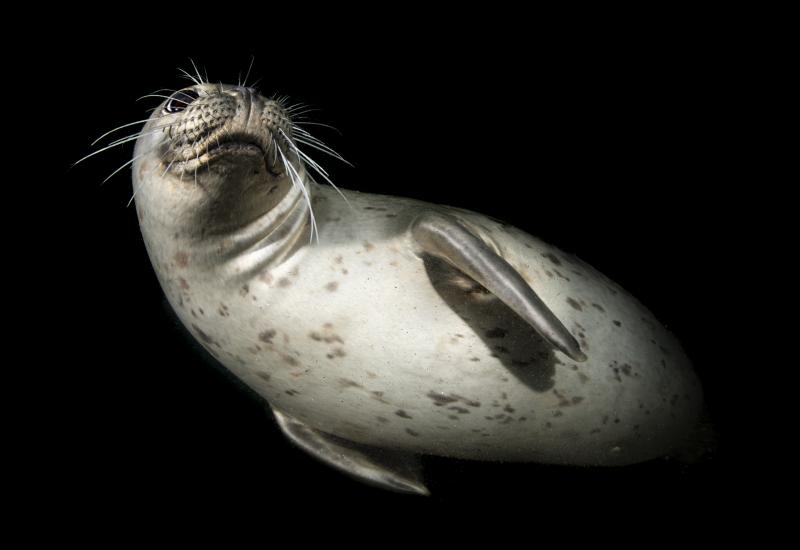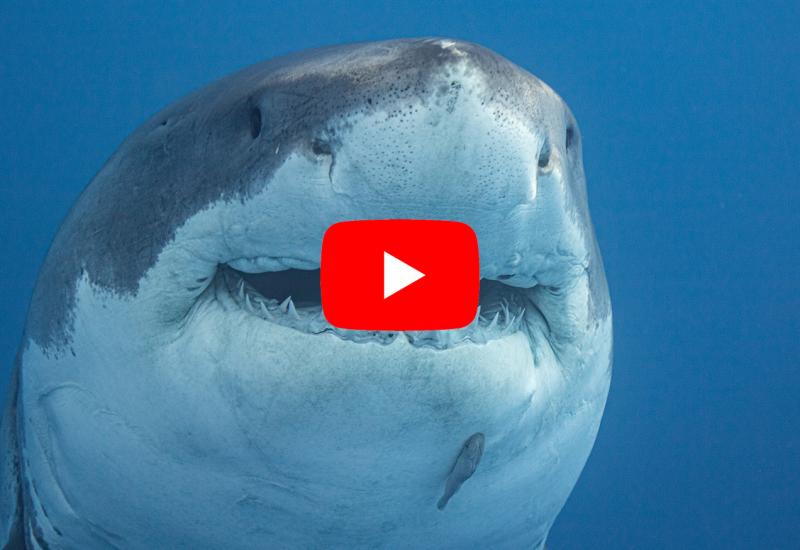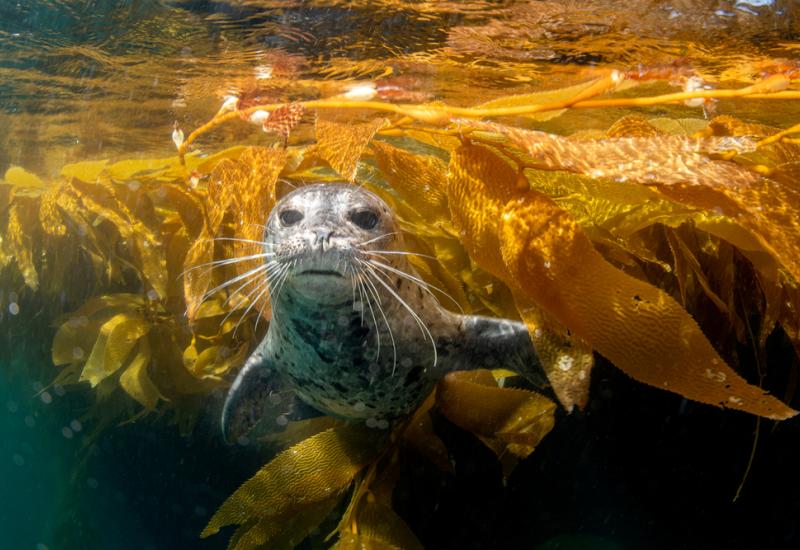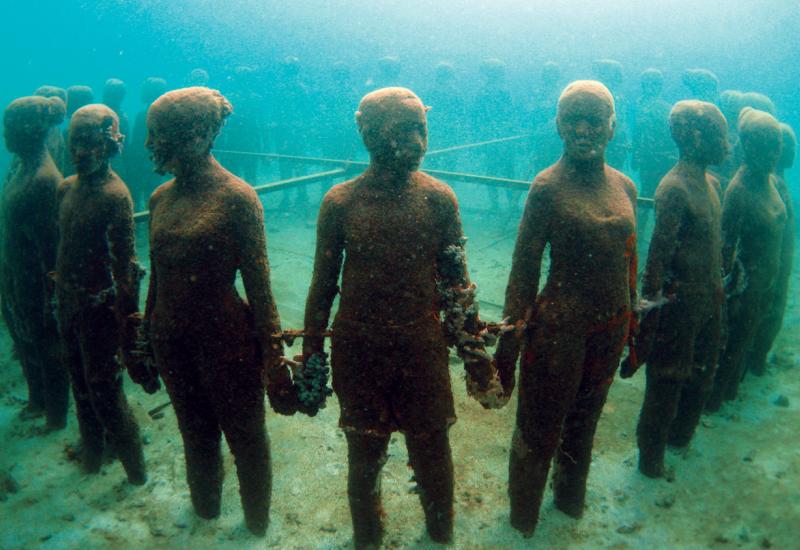Only in America: 12 Unique Domestic Dives
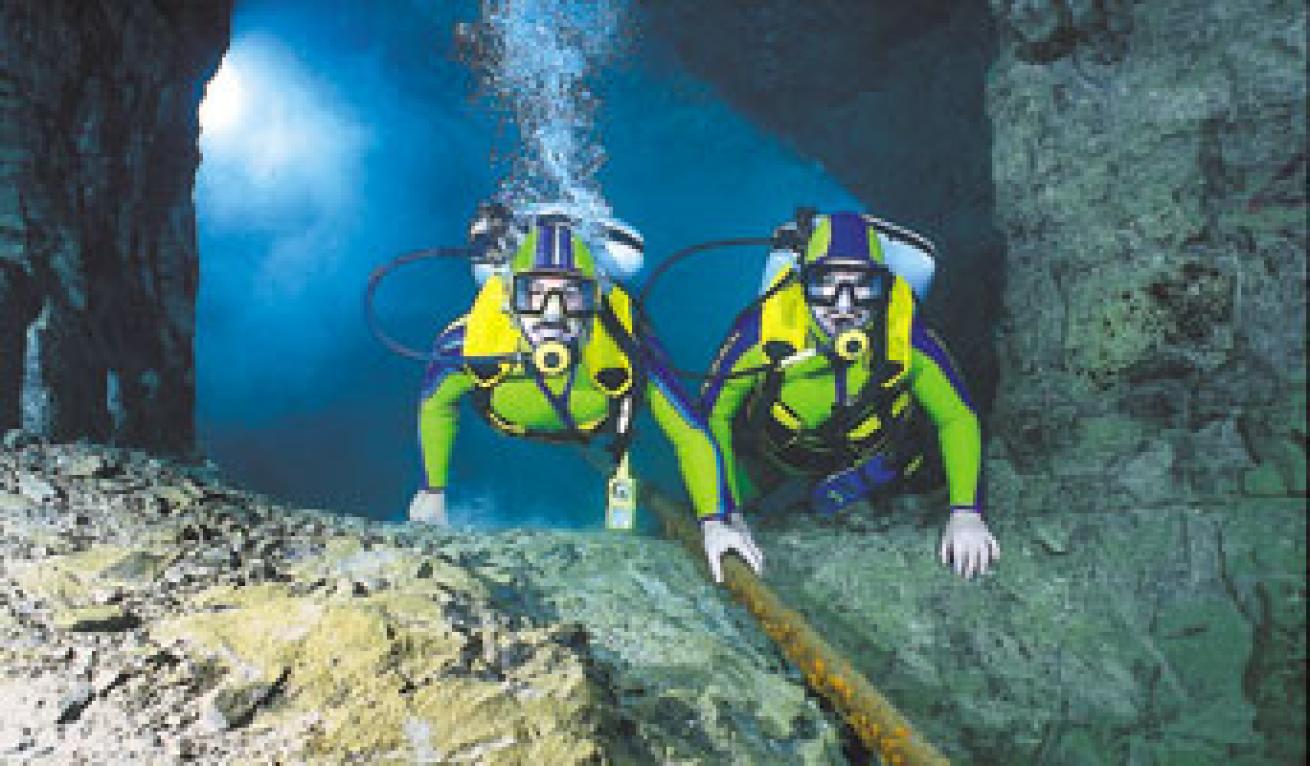
Forget spacious skies, amber waves of grain and even those shining seas. What makes America beautiful to thousands of divers are the off-the-beaten-path adventure dives in some of the unlikeliest places — including these unique gems.
Bonne Terre Mine
Location: Bonne Terre, Mo., about a hour south of St. Louis on Hwy. 67.
Adventure Quotient: Dive the only aqua-subway system in the world— seven miles of abandoned mine tunnels and one billion gallons of crystal-clear water that run directly beneath the town.
Profile: For more than a generation, Bonne Terre Mine produced ton after ton of lead. When the mine was abandoned in 1962, groundwater seeped in and filled the miles of enormous caverns, tunnels and shafts. You'll be diving deep beneath a train station, a funeral parlor, a pharmacy, a bank, and even City Hall. There's plenty to see in these mines — old mining equipment, train tracks, ore carts, shovels and steam-powered jackhammers.
Dive tours are fully escorted by safety divers. Be prepared to demonstrate your skill level by buddy breathing with a guide and flooding your mask before embarking on the first of the 24 progressive dive tours that range in skill level from basic "open water" caverns to cave-like tunnels.
While halogen lights simulate the open water experience, subterranean diving is not for everyone. The water is clear (60 to 100 feet of visibility), but chilly (55 degrees year-round). Only the guides are allowed lights in order to discourage freelance exploring. Because of the cold water, artificial light and cavern/cave conditions, this is an advanced dive for competent divers only.
How to Dive It: Bonne Terre is open weekends year-round, but diving is by reservation only. Contact: West End Diving.
The Cooper River
Location: About 45 minutes west of Charleston, S.C.
Adventure Quotient: Black-water diving for fossils and whatever else might turn up in the river bed.
Profile: Diving in the Cooper River's tannin-stained water is an eerie experience. At 28 feet, it's pitch black and even with a light, you'll only be able to see what's right in front of your face. Sound awful? It is, until you flatten out on the hardpan floor and scan crevices and troughs. Here you'll find dislodged artifacts and fossils including shark's teeth and whale ribs, some about seven million years old.
River access is provided through the local dive shop in Goose Creek. Divers assemble at a boat landing for the three- to 10-mile ride up the river. Timing is important since the river is dived at flood tide. The guides know the best places to dive and will put you in a safe spot.
Ascents and descents can be tricky and are best done while staring at your gauges to avoid disorientation. A goody bag is a must.
How to Dive It: Contact Cooper River Dive Charters.
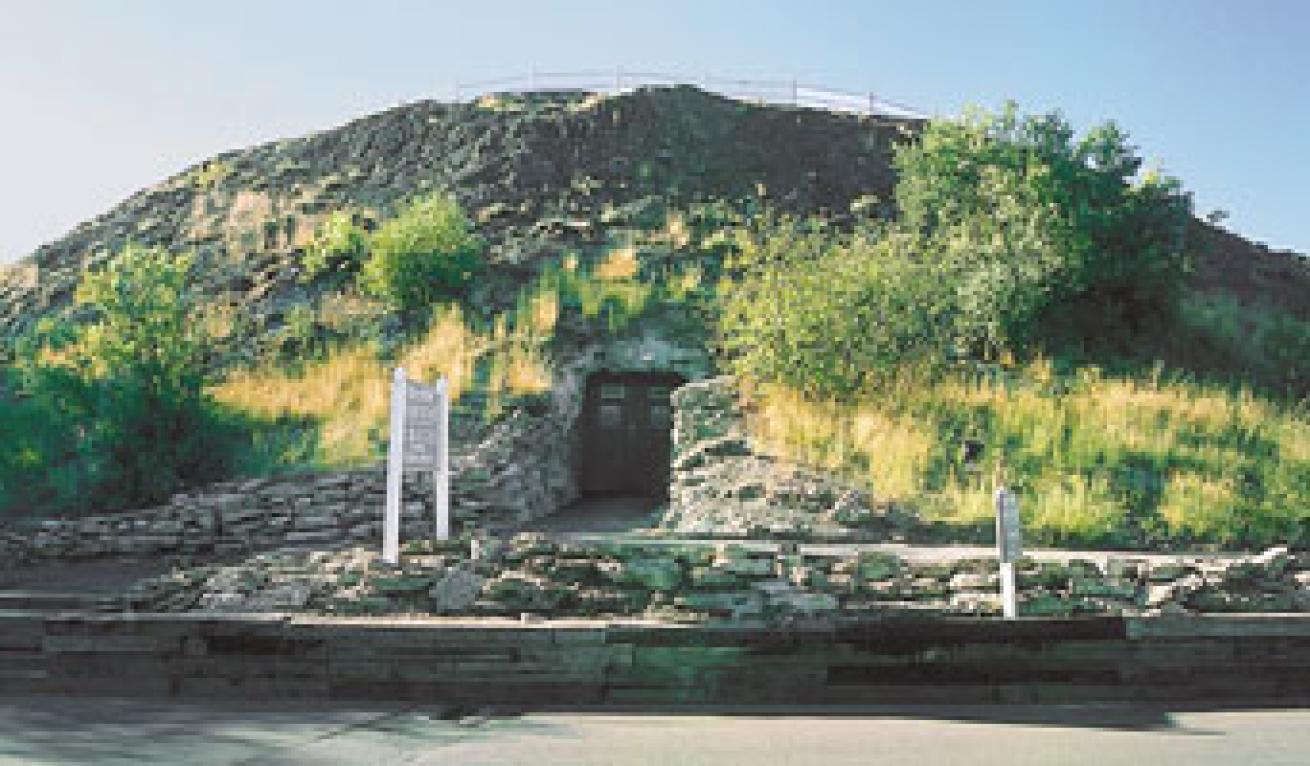
Tailrace Diving
Location: Garrison Dam, an hour north of Bismarck, N.D.; The Chute below Lake Oahe Dam, just outside of Pierre, S.D.; Colorado River, Willow Beach, Ariz.
Adventure Quotient: Drift diving on steroids. Yee-ha!
Profile: In case you're not familiar with the concept, tailrace diving is drift diving in the rapid outflow of a major dam. The result is a head-first underwater bobsled run that makes whitewater rafting seem like a weenie sport.
The drill is to drop into the middle of the current and cruise downriver just a few feet above the bottom watching out for what's ahead and dodging obstacles. Depending on where you are, you might see animal bones, schools of amused fish, grass fields, caverns or anything else that might end up in a river.
Depths can vary from a few feet to more than 40, but at all three of these sites, you can count on the water being very cold. Wearing extra neoprene will also help shield you from bumps and snags along the way.
How to Dive It: These dives are for advanced divers only and best done with knowledgeable guides from a local dive shop. Contact North Dakota: Scuba One Dive Shop.
Homestead Crater
Location: Homestead Resort, about an hour east of Salt Lake City, Utah, near Heberville.
Adventure Quotient: Another Journey to the Center of the Earth experience, only this time you're diving in a natural geologic crater instead of a mine.
Profile: The Homestead Crater is a natural hot spring inside a rock dome. The grotto is 60 feet across and comes complete with a small opening at the top. Below is 70 feet of clear and unusually hot water--between 90 and 96 degrees even in the dead of winter when snow is falling through the window above.
A 100-foot tunnel cuts into the base of the crater, making room for a tiny dive shop and providing access to a floating dock where divers suit up, wearing as little as their modesty allows.
Attractions inside the bell-shaped crater include a suspended wagon wheel and mineral deposits lining the walls. The crater has plenty of natural and artificial lighting, but a dive light is useful.
How to Dive It: The crater is open year-round to divers, swimmers and guests of the resort, so in the winter you may have to share it with ski bums taking a soak between runs. Contact Homestead Resort.
Yellowstone Lake
Location: Under the cold, clear waters of Yellowstone Lake, Wyo.
Adventure Quotient: Diving at 7,600 feet of altitude is an adventure in itself. Throw in underwater geysers and "mystery spires," and things get real interesting. The topside scenery ain't bad either.
Profile: Besides the standard wrecks, this lake offers underwater geysers and some strange lava-like spires that scientists can't quite figure out. Rising up to 20 feet off the lake bottom, they look something like rough stone chimneys. They may in fact be the skeletal remains of living creatures. Whatever they are, you're unlikely to see them anywhere else.
This is a cold-water, high-altitude dive for advanced divers. Bring a dry suit, take it easy and don't push any limits. And don't touch the spires.
How to Dive It: Contact Teton Aquatic Supply in Jackson. They keep a boat at the lake.
The Missile Silo
Location: About 20 minutes southwest of Abilene, Texas.
Adventure Quotient: Remember the Cold War? You will on this underwater tour of what was once a secure military facility.
Profile: In 1962, this underground bunker contained the blunt instrument of U.S. foreign policy — an Atlas F ICBM sporting the firepower of 50 Hiroshima bombs. The nukes are long gone and today the silo contains 130 feet of peaceful, clear groundwater.
From the Texas prairie above, a long set of stairs descends to what was once a top-secret military facility. Pass through several blast doors to the old launch control bunker, then proceed through a tunnel to the immense concrete silo — 52 feet across and 18 stories deep.
The water in the silo is 130 feet deep. There's a tangled pile of metal debris at the bottom and the missile control station, a tin shack structure that sticks out from the silo wall at 30 to 60 feet. The water is a constant 61 degrees and clarity is about 60 feet. you'll need a 7mm wetsuit with hood and gloves and want a dive light to explore the depths of the silo.
How to Dive It: The silo is open weekends by appointment only. For schedules, contact The Underwater Connection in Abilene or Family Scuba Center in Midland.
Clear Lake
Location: About 2 1/2 hours southwest of Portland, Ore.
Adventure Quotient: This lake offers visibility beyond anything imaginable. It'll make your swimming pool look like mud. But what's there to see? Plenty, including brilliant-yellow algae fields, lava flows, a sunken forest and geothermal vents that spew a milky, cloud-like substance.
Profile: Clear Lake is in the mountains of Oregon and the water is cold — very cold. Most of the bottom is covered with volcanic ash, which persuades some there isn't much to see. Not so. You'll need a dry suit. A sealed regulator is highly advised. The lake is an altitude dive at 4,000 feet, but it's only about 45 feet deep. The very cold water makes it an advanced dive, however, and good buoyancy skills are essential over a volcanic ash bottom.
How to Dive It: Contact Scuba Unlimited in Portland.
Bonus: Three More Unusual Sites
Jules' Undersea Lodge/Emerald Lagoon • Mangrove-lined Emerald Lagoon might best be described as an aquatic theme park dedicated to dive science. The centerpiece is Jules' Undersea Lodge, a deep-sea research habitat converted into the world's first and only underwater hotel.
Located in Key Largo, Fla., just off Hwy. 1 at Mile Marker 103, the lodge sleeps groups up to six, and NASA uses it occasionally to simulate conditions of living in space, but it's also popular with adventurous honeymooners.
Divers use an extensive system of hookah lines to visit the hotel for day visits or overnight stays and to explore the lagoon's numerous quarry-like attractions, which include an archaeological exhibit and second habitat structure set aside as a marine lab. Contact: Jules' Undersea Lodge.
Mt. Storm Lake, W. Va. • This diver-friendly lake has a large parking lot, easy shore-diving access, underwater platforms and warning signs to keep divers away from the dam. But what makes Mt. Storm unique is the water temperature — it's about 20 degrees warmer than anywhere else, and on cold days the lake steams like a witch's cauldron. The reason? Mt. Storm Lake is a man-made cooling pond for a massive coal-fired power plant. It's located off Rte. 42 in northern West Virginia near the Maryland border. Just look for the steam cloud. Contact: Breathe Deep Scuba and Sports, (304) 693-7282.
Bonneville Seabase, Utah • An inland sea stocked with tropical species from angelfish to nurse sharks located just west of Salt Lake City? Yep. The same geologic forces that help create the Great Salt Lake provide warm, saltwater ponds that are close enough to Caribbean conditions to support a diverse mix of ocean fish — from groupers to nurse sharks. It's near Grantsville, Utah, about 40 miles west of Salt Lake City. Contact: Bonneville Seabase.
More Great American Diving
Can't get enough of that domestic stuff? Neither can we.
50 Dives, 50 States. Point your browser to www.dive50states.com, a web site chronicling Charles Ballinger's 15,000-mile journey to every corner of the nation in search of the American dive experience. He's written a book on the project, American Adventure Underwater: Fifty Dives in Fifty States. Diving is a sport of exploration," says Ballinger. "That's why I like new diving experiences. It keeps the sport fresh and exciting."

